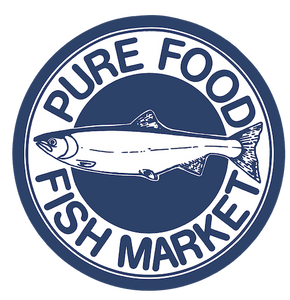FRESH BLOG
For all things Fresh Seafood, cooking inspiration, and more!

Seafood Buying Guide: Tips To Buying The Best Seafood
The first step in cooking great food is starting with the best ingredients, and if you want to make the best fish or shellfish, that means starting by buying fresh seafood. If you’re not sure what that entails or how to do it, though, don’t worry—this seafood buying guide will walk you through everything you need to know to get started buying fresh seafood.
A lot of people are intimidated or confused by learning about how to buy seafood, but the most important thing to know is that it’s okay to ask questions! Think of the fishmonger behind the counter or on the phone as your own personal seafood buying guide and don’t be shy: they can help you figure out what kind of fish you want, how to cook it, when you’ll want to use it buy, and tell you how to store it.
But even before you look for this information, there are a few things that you can have in mind to ask your fishmonger about to make sure you end up with the best possible seafood.
Fresh vs. Frozen vs. Live
The terminology around fresh seafood can be extremely confusing—and even change depending on the type of seafood you’re talking about. A few different types of freshness you’ll want to know about and how to tell if the seafood is good:
The freshest clams, mussels, oysters, and other types of shellfish are sold alive—for most bivalves, as well as crab you want to buy them only live or cooked (which includes tinned, smoked, or steamed). Bivalves should be tightly closed or close when touched, and crab or lobster should be lively and reactive.
For fish, you’ll often see both fresh fish that’s never been frozen and “fresh-frozen” which means that it was deep-chilled immediately after catching to keep it in the best possible shape. Without fresh-frozen fish, seafood would be far more limited in seasonality and regionality, so don’t be afraid of the word frozen when you are buying fresh seafood. Both of these types of freshness result in extremely high-quality fish—look for smooth, flush meat tight to the skin and bones, without gaping.
Sustainability
One of the hardest parts of putting together a seafood buying guide is talking about sustainability: it varies constantly and is often specific to each type of seafood, where it comes from, and how it was caught. Major guides like the Marine Stewardship Council or Monterrey Bay Aquarium are good places to start, but good fishmongers will often have more up-to-date or specific knowledge. If sustainability is a priority in your fish shopping, be sure to ask questions as you purchase.
Perishability
The difference between how long you’ll want to keep live mussels (no more than a few days) and live oysters (more than a week) is huge. A head-on salmon won’t last as long as just the body. If you’re buying fresh seafood for a specific meal—or meals—be sure to consider how long before you’ll be cooking the seafood and take that into account when you purchase it.

